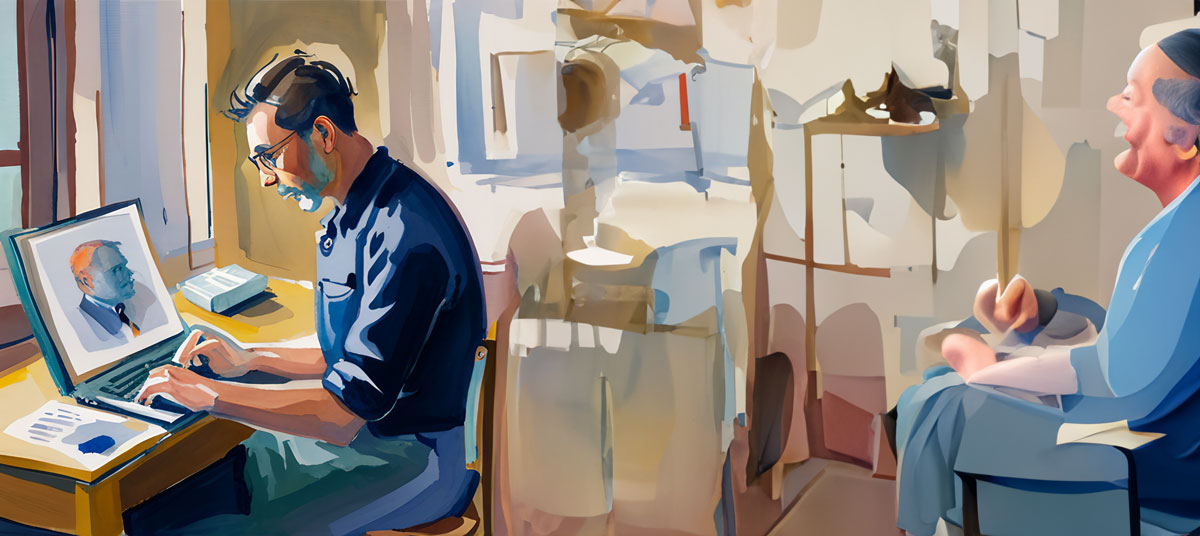Your cart is currently empty!

Transcribing History: Using Adobe Premiere for Archiving Oral Histories
When it comes to preserving our rich history, oral accounts are invaluable. They provide a personal touch and an emotional connection that written records often lack. However, transcribing these oral histories can be a daunting task, especially when you have hours of audio to go through. Adobe Premiere, a powerful video editing software, can also be used as an effective transcription tool to make this process easier and more efficient. In this article, we’ll explore how Adobe Premiere can help you transcribe archived oral history audio, allowing you to preserve the past in a more accessible format.
Embracing Technology: Adobe Premiere for Transcription
While Adobe Premiere is primarily known for its video editing capabilities, it has a host of features that make it an ideal tool for transcribing audio as well. The software allows you to import audio files, adjust playback speed, add markers, and even generate automatic speech-to-text transcriptions using its built-in captions feature. By utilizing Adobe Premiere for transcription, you can streamline the process and create a more accurate and organized record of your oral history materials.
Importing Audio
First things first, you need to import your oral history audio files into Adobe Premiere. To do this, simply click on “File,” then “Import,” and select the audio files you wish to transcribe. You can also drag and drop your files directly into the project panel.
Adjusting Playback Speed
Transcribing audio can be time-consuming, but Adobe Premiere allows you to adjust the playback speed of your audio files without affecting the pitch. This feature enables you to listen to the audio at a faster pace while still maintaining clarity, which can significantly reduce the time spent on transcription. To adjust the playback speed, right-click on the audio file in the timeline, select “Speed/Duration,” and adjust the speed percentage according to your preference.
Adding Markers
Markers are an essential tool for organizing your transcription process and keeping track of important moments within the audio file. Adobe Premiere makes it easy to add markers directly on the timeline as you listen to the audio. To add a marker, simply press “M” on your keyboard while the audio is playing. You can also add a description to each marker, making it easier to locate specific points in the audio later on.
Generating Automatic Transcriptions
Adobe Premiere’s speech-to-text feature is a game-changer when it comes to transcribing oral history audio. By utilizing Adobe Sensei, the software’s AI-powered technology, Premiere can generate automatic captions for your audio files. To access this feature, click on “Window,” then “Text,” and select “Transcribe Sequence.” Once the transcription is complete, you can edit the text for accuracy and even export it as a separate document.
Sharing Your Transcribed Histories
Once you’ve completed the transcription process using Adobe Premiere, you can easily share your findings with others, encouraging them to explore and engage with their own family histories. Consider creating a blog or social media page dedicated to your transcribed oral histories, or even host a community event where people can gather to listen and discuss these unique accounts.
Conclusion
Transcribing oral history audio can be a challenging but rewarding endeavor. By leveraging Adobe Premiere’s powerful features, you can streamline the transcription process, create more accurate records, and preserve the voices of the past for future generations to discover and appreciate. So, dive into those archived audio files and let Adobe Premiere help you bring the stories of your ancestors to life!
by
Tags:
Family Scrolls is dedicated to creating living, rich media histories. My name is Briyan Baker and I’ve always loved exploring my family history. My career in the graphic arts industry has allowed me to explore all kinds of creative uses for multimedia materials: audio, video, text, photos, graphics, etc., and bring them to life while telling vivid, engaging stories.
- Blog (1)
- Books, Journals, Historical Writing (7)
- Crafting and Keepsakes (5)
- Family Events (2)
- Genealogy (3)
- Oral History (2)
- Photo, Audio, Video (4)
- Print and Display Ideas (4)
- Vlogging (3)
- World Wide Web Family (4)
